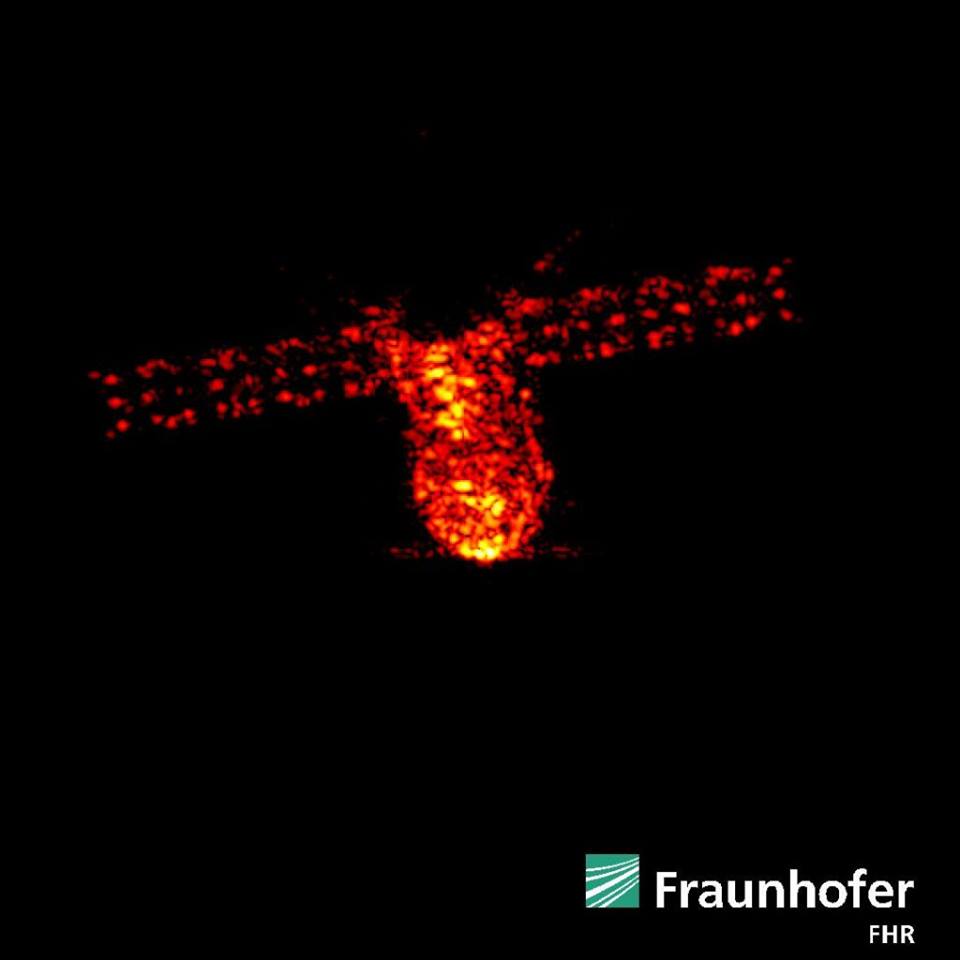By the time most people read this, the event will already have happened and I will have my follow-up article on the subject, but for now, this is still worth writing about.
UPDATE: It re-entered at 8:16 PM Central Daylight Time – https://www.xadara.com/tiangong-1-is-gone/
Tiangong-1 is now estimate by the European Space Agency to re-enter sometime in a four hour window centered on 1:07 UTC, on April 2nd – for me, that’s about 8:07 Central Daylight Time.

Radar image of Tiangong-1 taken on April 1st. Quite possibly the last image that will be taken of the station.
Since my last update on the station, just shy of a week ago, it has lost quite a bit more altitude – about 50 kilometers, give or take depending on your source, meaning the station is now only around 150-170 kilometers in altitude (93 to 105 miles.)
At that altitude, atmospheric drag is really starting to take its toll – the station is losing altitude rapidly, an in the process speeding up due to gravitational acceleration which, ironically, is causing drag to increase on the tumbling space station.
It’s complicated to explain, but what it boils down to is Tiangong-1 has only a few hours left in orbit.
http://en.cmse.gov.cn/art/2018/4/1/art_1763_32415.html
Now, I mentioned the window for it actually losing orbit is about 4 hours. An orbit of the Earth takes around 90 minutes, meaning there is little way to predict just where the station will come down. The good news is, some predictions on the Earth’s rotational position at that time compared to the orbital path of Tiangong-1 can show us the general range that could be affected, but still no way to predict exactly where.
That being said, it looks like Tiangong-1 will be making passes over South America, some of Africa, the Mediterranian Sea, the Middle East, India and Southern China, South East Asia and Australia. The satview site itself is predicting entry interface (the point of actual atmosphere re-entry) to be just off the coast of Brazil, heading North-east over the Atlantic ocean. A safe enough area, but debris could still land in Africa – orbital debris spread can be quite wide, especially considering that odds are Tiangong-1 will not begin to disintegrate at that exact spot.
http://www.satview.org/forec.php?sat_id=37820U&dmy=02042018&hms=0300
I doubt much will come of this beyond, hopefully, a rather wonderful light show, but still, the possibility is there for something interesting to make landfall, or for something worse to happen with heavier debris landing in a more populated area It’s a slim chance, but it could happen.
I’ll post an update once news breaks that the station has re-entered.
https://twitter.com/iangriffin/status/979990822576771073
https://twitter.com/TheRealS0s/status/979921164557406208

